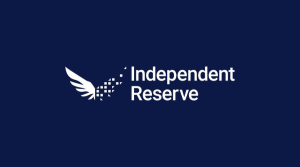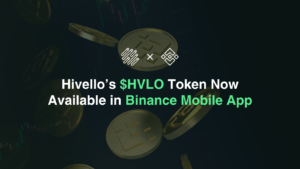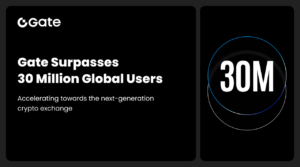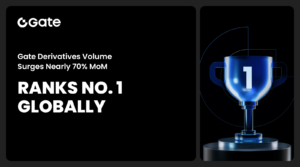How to Create Central Bank Digital Currency (CBDC) over XinFin (XDC) Network?

Abbreviated from Central Bank Digital Currency, CBDCs are digital or electronic representations of national fiat currencies. Leveraging distributed ledger technologies such as blockchain, CBDCs enable central banks to increase payment efficiency while drastically lowering transaction costs.Although similar to cryptocurrencies such as bitcoin or ether, CBDCs have substantial distinctions. While the former is mostly unregulated, CBDCs function under the governance of a nation’s central financial authority. Furthermore, CBDCs are mostly stablecoins, backed by physical assets of value, such as gold or other foreign currencies; this eliminates the volatility crisis facing ordinary cryptocurrencies. Combining these factors, then, CBDCs are more secured, efficient, transparent, and cost-minimized versions of money deposited in your bank account. In 2020, China’s central bank began an experiment with digital yuan in Suzhou, Chengdu, and Xiong’an. According to its governor, Li Bo, the ‘testing had shown that the issuance and distribution mechanism of the digital yuan, or e-CNY, are compatible with the existing financial system, and help minimize the impact on the banking sector.’ Following suit, the Reserve Bank of India has also expressed plans to explore CBDCs; so have Bank of England, Bank of Canada, and the central banks of Uruguay, Thailand, Venezuela, Sweden, and Singapore, among others. Against this backdrop, let us discuss how central banks can build robust CBDCs over the XinFin Digital Contract (XDC) network. Mitigating Counterfeit & Other Advantages of Using Blockchain for CBDC Before zooming in on the steps to create CBDCs on XinFin, it’s worthwhile to consider the general significance of blockchain technology in this regard. Counterfeits, for one, are among the greatest threats to the sanctity of paper-based fiats; legacy digital currencies, as well, are prone to hacks and scams. Blockchain’s immutability mitigates these issues, but it brings more to the table. Transparency The lack of transparency is a persistent problem for traditional finance. Ironically, central banks have often been at the center of transparency-related misgivings and controversies. Centralized legacy banking systems cannot meet the current standards of transparency; blockchain-based decentralized frameworks can. By implementing distributed consensus mechanisms, it is now possible to build trustless and verifiable financial systems. However, at times when central banks have to deal with highly sensitive data—which is most of the time—absolute transparency may not be appropriate. In these cases, some data has to be necessarily kept private, for the benefit of individual clients. XinFin’s public-private hybrid blockchain can smoothly resolve this dilemma; sensitive data can be handled in private while retaining their public verifiability. Security & SustainabilityBlockchain platforms leverage enhanced homomorphic cryptography to ensure the optimum degree of security for transactions. Rather than centralized servers, assets and data are stored over a globally distributed network of computers (nodes). This eliminates the risks of hacks and breaches, as opposed to legacy financial systems. Furthermore, blockchains enable deterministic finality for transactions; once finalized, a transaction cannot be reversed. Distributed ledgers implement decentralized consensus mechanisms to secure their networks while enabling tamper-proof validation of transactional blocks. Proof-of-Work (PoW) and Proof-of-Stake (PoS) are two of the commonly used consensus mechanisms. XinFin, however, has taken the security of distributed consensus a step forward; the XinFin Delegated Proof-of-Stake (XDPoS) is an evolved form for ordinary PoS. Apart from security enhancements, the XDPoS mechanism makes XinFin environmentally sustainable. By facilitating extremely low energy consumption and carbon footprint, XDPoS elevates XDC—XinFin’s native token—to the reputed class of Green Coins. Moreover, in general, using blockchains allows central banks to minimize the consumption of paper. Cost & Speed OptimizationIn legacy finance, a majority of transactional costs are incurred in two respects; one, building and maintaining the infrastructure; two, remunerating the several intermediaries involved in the process. Adopting blockchain technology ensures substantial cost reductions along both flanks. In XinFin, for instance, financial processes are fully non-intermediated and algorithmically automated; this minimizes vendor costs that central banks traditionally incur. Distributed consensus reduces validation costs as well. Furthermore, the transaction fee on XinFin is only 0.000001 USD, which is practically non-existent.In terms of speed as well, blockchains significantly enhance the performance of central banks, especially for cross-border transactions. Traditionally, such transactions require a week or more for settlement. XinFin, on the contrary, settles them in 2 seconds, while handling more than 2000 transactions per second. Above all, the speed doesn’t come as a compromise for precision or efficiency; algorithmic automation eliminates human errors. Creating CBDCs with XinFin XDC NetworkHaving discussed the overall benefits of using blockchains for CBDCs, and especially why central banks might prefer using XinFin, let us now look at the creation process. As such, based on the asset backing them, CBDCs can be of four broad types: fiat-collateralized, crypto-collateralized, commodity-collateralized, and non-collateralized. While collateralized CBDCs usually have a 1:1 backing, non-collateralized ones leverage Seigniorage Shares Systems. But for each of these types, the process of creating CBDCs on XinFin is mostly similar and extremely easy. It only takes a few minutes, and the steps are as follows: Step 1: Visit the MyContract website, to start creating your stablecoin, either on the XinFin Mainnet or the XinFin Apothem Network.Step 2: Log in to the portal, either with XinPay or your private key. Step 3: Enter the details of your stablecoin, such as name, symbol, supply, and so on. Step 4: Review the details carefully; mistakes can lead to loss of funds and also credibility among potential users.Step 5: Click on the ‘Issue Token’ button, and voila, your CBDC is ready for use; confirm the issuance using XinFinScan.Parting WordsThe world is digitizing rapidly, and finance must keep pace. The demand for seamless, robust, and efficient services are now being expected from governmental entities as well, and not just private service providers. Among others, central banks around the world are waking up to this need of the hour; CBDCs, for them, is a way forward, which also enables greater financial inclusion across social and economic strata.As an enterprise-ready network, XinFin is perfectly poised to assist the digital transformation of legacy banking systems. The network is fast, secure, and efficient; it is also economically and environmentally sustainable to a remarkable degree. In their journey towards CBDCs, XinFin assists central banks with a network that offers the right balance between privacy and verifiability of sensitive financial data. Lastly, then, it’s not an overstatement to claim that this is the time to build the future; the future is CBDC.








